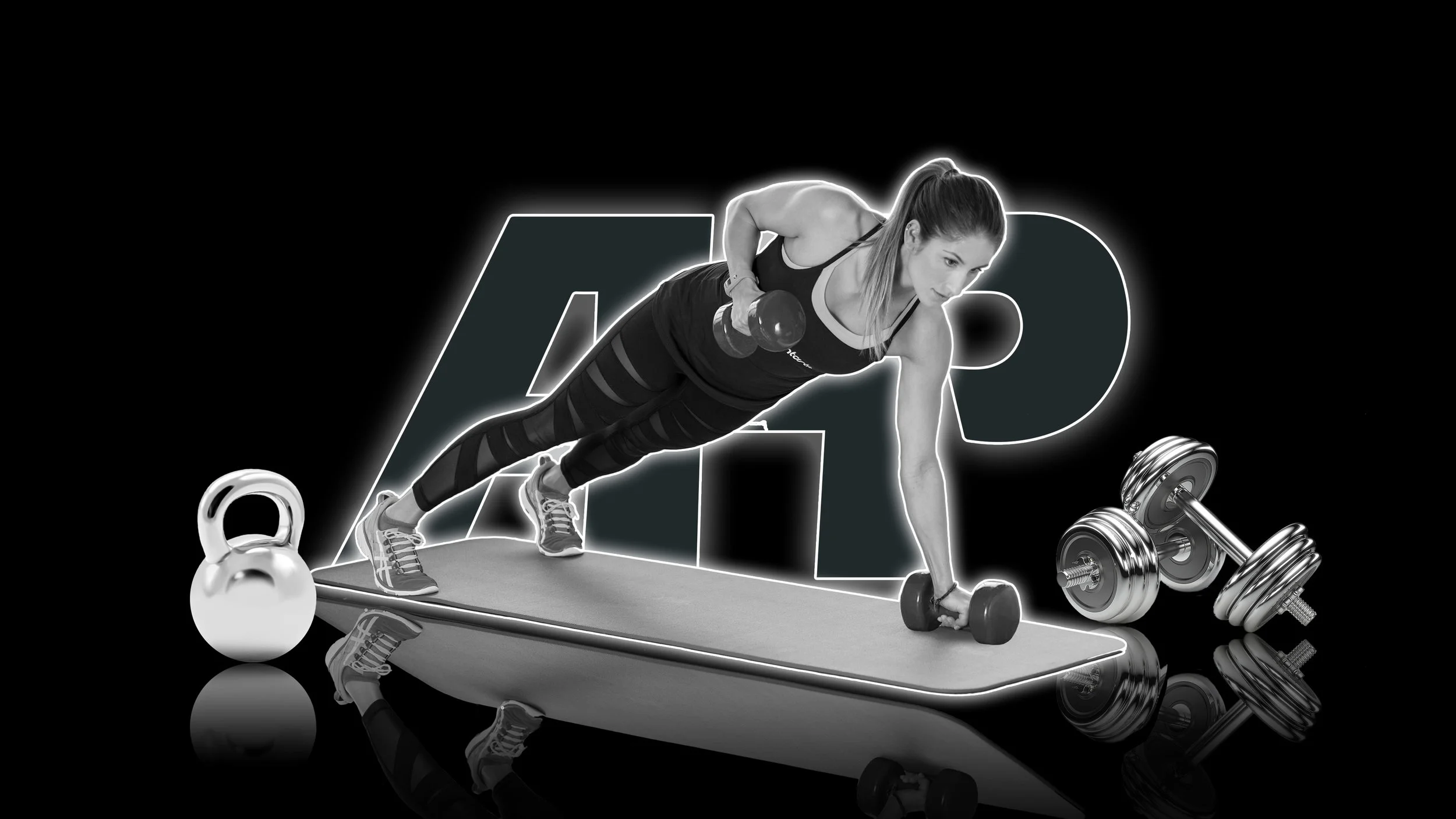Monster Mass & Functional Strength with Rotational Barbell Exercises
Dr. Joel Seedman, Ph.D.
Last year I posted an article about the effectiveness of using the rotational barbell method to perform single arm Arnold Presses, a.k.a. helicopter press. Since then the exercise has gained quite a bit of popularity not only because of its incredibly high difficulty level but also because of its effectiveness. However, this same concept can be applied to a number of single arm upper body exercises including chest presses, bent over rows, and renegade rows as I show in several of the following videos alongside my awesome clients Leslie Petch and Ben Lai.
In fact incorporating the rotational barbell technique (helicopter rows and presses) on upper body movements provides 7 unique benefits.
1. The rotational barbell protocol is perhaps the single most effective technique I’ve ever employed for eliminating excessive momentum and forcing the lifter to use smooth, controlled mechanics. In reality it requires that the lifter perform the exercises in an almost slow-motion fashion in order to lock the movement in. Additionally, the barbell can only rotate at a very slow speed regardless of how strong you are. In order to synchronize the rotational component of the barbell with the actual lifting segments of the movement, the lifter will be required to perform the exercises exceptionally slow and controlled. This does wonder not only for placing very high levels of constant tension on the targeted musculature but also for eliminating stress to the joints and connective tissue. Whether you have shoulder or elbow issues, these are incredibly joint friendly.
2. As previously mentioned, the slow-motion quality of rotational barbell movements produces incredible intramuscular tension. The combination of heightened mechanical tension combined with metabolic stress as well as muscle damage (from the slow eccentrics) makes these incredibly potent for triggering functional strength and hypertrophy.
3. Besides inducing a strong hypertrophy stimulus, rotational barbell drills are exceptional for improving motor control, kinesthetic awareness, proprioception, and overall body mechanics. That’s because anything but perfectly dialed in technique will cause the barbell to twist, shift, tilt, or rotate in an uncontrollable fashion. To eliminate these issues the lifter will be forced maintain full body tension and eliminate any and all energy leaks throughout their entire body. This also has a significant impact on teaching individuals how to remain tight during high tension movements which has incredible transfer to more traditional strength movements. Learn more about isolateral barbell movements here.
4. Besides crushing the larger muscles of the upper body such as the chest, back, shoulders, biceps, and triceps, rotational barbell movements provide an inordinately intense stimulus to the grip, hands, and forearms. If you’ve ever performed traditional javelin or suitcase barbell exercises you’ll understand how intense those can be on the grip and forearms. However adding in the rotational feature magnifies the grip and forearm stimulus even further. Just be prepared to squeeze the daylights out of the bar throughout the entire duration of the set as anything less will make it impossible to control the barbell.
5. A very common problem lifters have when performing upper body exercises is allowing excessive protraction (shoulder rounding). This typically happens when the arm extends such as the top position of a press or the bottom position of a bent over row (straight arm position). The goal when extending the arm during any press or row is to fully extend and lengthen the upper back and lat muscles without allowing the shoulders to round. In other words, full extension without losing perfect postural alignment.
Unfortunately most fitness professionals, trainers, and lifters have erroneously bought into the idea that they need excessively high levels of protraction to complete the movement. However this can lead to serious joint issues especially in the shoulders and elbows, not to mention the entire spine. Fortunately the rotational barbell movements teach optimal level of protraction as even the slightest collapse or shoulder rounding will cause the lifter to lose control of the barbell. However, for those who fall on the opposite end of the spectrum and have a tendency to short change this end range of motion, the rotational nature of the barbell will also force the lifter to complete the movement and fully extend.
6. Besides requiring the highest level of motor control and kinesthetic awareness, you’ll also have to resist extreme rotational forces at the shoulder joint as the bar will want to pull the glenohumeral joint out of alignment each time it rotates. To resist this the lifter will be forced to pack and centrate the glenohumeral joint into the most biomechanically sound position in order to decelerate the rotating barbell. This requires incredibly high levels of shoulder stability, lat activation, and postural alignment. With that said I recommend starting very light such as with the empty bar before moving to heavier loads.
7. Stabilizing the shoulder joint is only half the battle when it comes to rotational barbell movements as the core musculature gets equally pummeled. Not only do you have offset loading to deal with (one side of the body loaded at a time) which already produces significant levels of anti-rotation and anti-lateral flexion of the spine but the rotating barbell exponentially enhances these factors. That’s because each time the bar twists and rotates, there will be tremendous torque on the entire body that wants to move the torso and spine out of alignment. To resist these forces, the lifter will be required to fire the daylights out of the entire musculature of the core.
Realistic Numbers
As previously mentioned rotational barbell movements are very advanced and should only be attempted by experienced lifters with an adequate level of competency when it comes to traditional movements. I recommend starting with 50% of the load you would typically handle on similar dumbbell variations. In other words if you perform single arm dumbbell presses with a 90 pound load, a 45 pound empty bar should more than suffice for your first few attempts.
As you progress and become more efficient the lifter should eventually be capable of handling at least 80% of the load they typically handle on their dumbbell counterparts. For instance, in the rowing video above I’m handling 95 pounds for the barbell rotational row. Typically the heaviest weights I’ll use on a single arm dumbbell row is 110-120 pounds.
Learn about other advanced isolateral barbell methods here.
If you’re looking for a program that teaches you how to incorporate unique movements such as these rotational barbell drills into your routine, check out my Complete Templates Series.













































